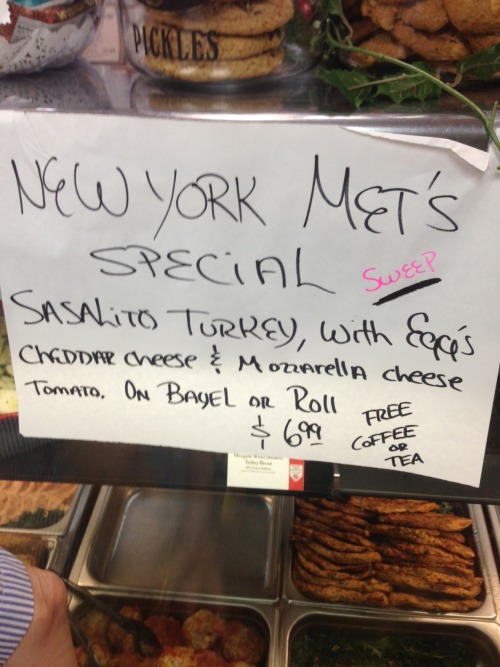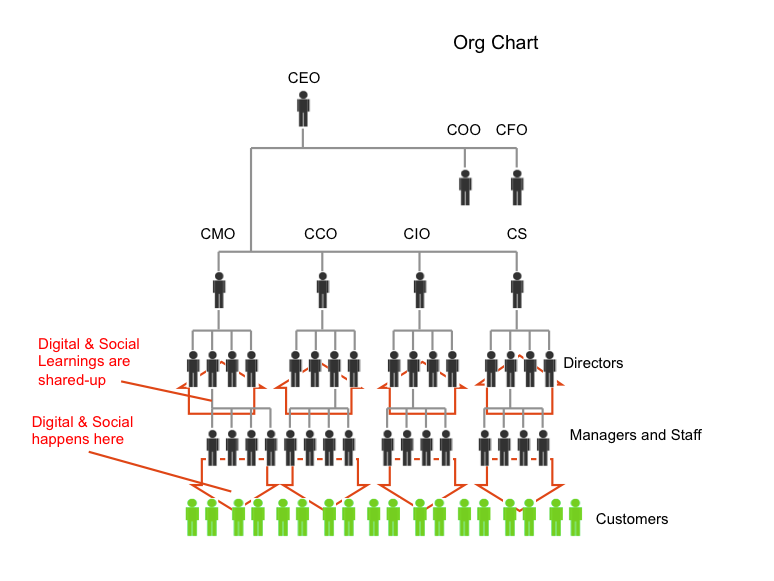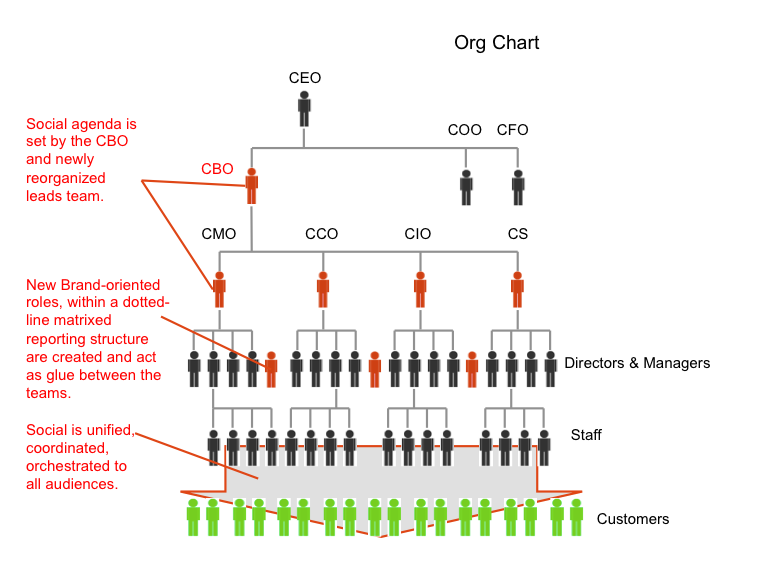“How could you not invite me?” says the one young-woman with her back to me. She is speaking very blankly, strongly, in a near monotone, to her “friend.” I can’t tell if she’s being natural or practicing a line in a play. Her voice has a plain low note as if she’s impersonating someone. “I’m so upset with you,” she states with a silent pause between each word.
It was a sunny autumn day. The sun dappled its way through the shapes between the leaves, which were just turning from green to orange. I was sitting outside, in a prime seat in front of a local favorite café near where I lived in Brooklyn. Patrons pull and drag the outdoor seats around to create seating clusters. You really can’t get that far from anyone.
“I thought you were going to be out of town, it didn’t occur to me to invite you,” says the “friend.” She is facing towards me and has the look of a sad poodle. Her wild and long corkscrew curly brown hair covers her face down to her nose. She sweeps her hair away to reveal the soft tears that well in her eyes as she answers these seemingly prepared questions.
I close my eyes, listening to the much-too-obvious back and forth of their conversation and envision their banter as a one-act play, way off-Broadway in a poorly constructed stage set with cardboard props. The two actors would sit on unmatched second-hand chairs. The upholstery is threadbare with visible springs and stuffing and stains. The one other person in the small theater, who must be an off-Broadway maven with the interest to sit through this dialogue, would lean over deliberately and whisper to me, “See, the set is meant to echo their relationship.”
“Well, I’m not sure what you can say to make me feel better, “the monotinist continues, “See if you can make me feel better. You are not making me feel better and I demand to feel better.”
I began to wonder if this wasn’t a one-act play, but was some form of domination routine, a public humiliation that would be converted into something more corrupt later. The off-Broadway maven wags his finger at me and whispers, “No, it’s the underlying unrequited theme of our era pulsing through these two characters.”
“I’m not sure I can say anything more than I have already said, I’m sorry, you’re a really good friend, it was an oversight I guess,” the sad one replies.
“An oversight? I thought I was your best friend?”
“You’re very important to me, our friendship is important, please accept my apology”
“You’re not making me feel better.”
I open my eyes. The sun is glorious. To my right a beige-clad couple plops a short stack of faded paperbacks on the narrow table we share. She holds one open on her lap, the cover folded over and wrapped behind the main body of the book. I give the couple names. She is Rebecca, he is Duncan. They settle on a crossword to solve.
Rebecca provides Duncan with each hint, aloud, tilting her head towards him, squinting her eyes and I can see the spider web wrinkles above her cheekbones. Duncan looks up to the sky while mildly patting a shorthaired lapdog. I name the lapdog Cardigan. Cardigan’s attitude fluctuates between exhilarated tail wagging and face-hiding embarrassment.
Each time Rebecca asks Duncan a question, Duncan twists up his mouth, pauses in reflection for about five seconds, and then dramatically turn his gaze to Rebecca with a wide smile and says, “You know, I don’t know that answer, what do you think love.” He lingers on the word love, it sounds like, “laauuhove.” His teeth glitter. Reenergized from his passing the question back to her, Rebecca rolls her right shoulder from back to front, pulling up the sleeve of her bulky pressed wool beige jacket, giving herself enough flexibility in her arm to plot out the all caps in the available boxes.
“SERPENTINE!” she exclaims, “It fits!”
But her joy is short lived, she’s on to the next hint, reading it to herself her lips tremble slightly. She slouches a bit, with some worry over SERPENTINE as it relates to the next set of overlapping squares.
“What’s a four letter word for an all night party?” Rebecca asks Duncan. Cardigan wags his tail. Duncan raises his face to the sky and Cardigan hides his nose in Duncan’s coat.
“Bender?” Duncan asks the sky. Cardigan looks at Rebecca.
“Bash?” Rebecca replies. Cardigan wags his tail. Rebecca looks down at the folded paperback, “But it seems to begin with an R. That’s strange.”
I shift my head, slightly, to see if I can view the four-letter frame.
“What’s a four-letter word, beginning with an R, for an all-night party? Maybe it’s a typo?” Cardigan is energetically wagging his whole body. Cardigan looks at me, bright eyes, tongue slightly ajar. I sip my double cappuccino.
All of the outdoor seats at the café are taken. We co-customers crowd onto the short benches and loose-legged seats, each with our coffees, some with small plates of half eaten pastries. I notice, that they, like me, briefly shift their gaze towards the couple with sly bemused glances. Their heads do not move, their eyes do.
“How do they not know that word?” I say to myself, and Cardigan the dog seems to be reading my mind. I wonder if I too am moving my lips. He is marching his short legs up and down, aiming towards my chair. Duncan grips him by the narrow back half of his body, keeping him in place. Cardigan looks at me confused as to why he is not advancing.
It was at this moment that the punk rocker with face tattoos makes himself known. He was sitting on the stoop of the building to the left of the café. His face tattoos are subtle. He has two sliver faded green moons, like thin smiles, drawn just above his cheekbones yet set directly below each eye. There were some fragments of a tattoo that leaked out from under his green army-issue cap. It was hard to tell what it was.
He was laughing at erratic intervals. At first I thought maybe he was listening to a podcast, but then I notice he is half hiding a small bottle of local “Brooklyn” brand whiskey between his heather grey wool gloves, and it was halfway finished. He turns sharply to meet my gaze, he holds up the bottle for me to see, and raising his eyebrows, which lifted his cap, he says, “Want to embellish your beverage bro? It’s a fine whiskey.” I smile back, and shake my head. Sharing a swig would be an entrance to a much different afternoon than I had planned.
The local ladies from my old neighborhood would sit on vintage folding chairs in front of their stoops to take in the summer sun. They’d flag you down as you walked by as they always had something important to share with you. This one lady who regularly wore a bright yellow and white flower printed dress with thin yellow halter straps across her tanned shoulders exclaimed to me while holding both hands up, palms towards me, “Young man, don’t forget, in New York it’s easy to make friends, but you can never get rid of them!”
I notice the punk rocker is also intrigued by the passive-aggressive conversation of the monotonist and her friend. He tries to softly whisper a question to me, so they couldn’t hear it, even though he’s about ten feet away from me.
“Do you believe what they’re saying?” I turn my head towards them and they both look at me. One with piercing eyes, the other with a smirk. I then turn my head back towards the punk rocker.
“No,” I silently mouth back.
“Wha?” He replies aloud, holding his arms wide, pushing his head down into his neck like a turtle.
“No.” I mouth silently while shaking my head, but everybody sees me now.
Duncan and Cardigan both give me a quick questionable glance. Duncan drops the look from his face once he realizes I am chatting with a drunk punk rocker. Cardigan again tries to march towards me. I have the inclination to pet him, but I don’t.
At that moment, the punk rocker jumps up from his spot on the stoop as a well-bundled novel reader vacates the seat next to the two young-women. The punk rocker drops his green denim satchel on the crooked slate tiles of the patio, and engages the two, “Hey, I’m going to get a coffee, do either of you ladies want something?”
“No thanks,” they said in unison, about two octaves higher than the voices they had been using for their conversation. The co-customers take notice to their new tone by shifting their eyes onto the faces of the two young-women to gage their sincerity. Then all eyes shift back.
“Ok, then,” he said, “can you watch my bag?” without waiting for an answer, and as he makes his way towards the door of the café the temperature of the air shifts, it grows warmer as if a late-summer breeze from 7th avenue had wafted its way down this side street to warm up this autumn afternoon, bringing odors of food, leather shoes and truck exhaust.
The punk rocker freezes in his spot, turns his head 90 degrees to look up the street and says, “Oh man, this neighborhood is hysterical.”
We all follow his sightline up the hill, turning our heads, but not our bodies, towards 7th avenue. Sauntering down the street towards Café Regular was the locally homegrown actor John Turturro.
As John Turturro reaches the area just in front of the cafe, I aim my eyes to meet his eyes and provide a head nod. He obliges, and in that slow moment of locking eyes all time and space froze. I could see each strand of curly hair on his head, where the grey mixed with the black. I could see the pores on his face. I could see the low tint of his teeth in the thin space between his lips, the lint on his overcoat, the wrinkles of his hands. I entered that moment with all of my belief that he would become my best friend and then he spoke to us.
“Hi,” he snorts, not looking at anyone in particular, and lifts his right arm slightly to half-wave. His head slightly lowered on a tilt as if expecting someone might throw something at him.
Then, the punk rocker jumps up to engage John, either because he is drunk or because he is a punk rocker.
“I’m a film producer!” he exclaims, and the air shuts tight into a sudden quietness, the birds stop chirping, all the traffic stops. The punk rocker continues… “I am a film producer and John, can you help me get my film made?”
We all hold our breaths. The gasp is audible. The dozen or so of us outside, and the dozen of so of us inside are all waiting for John’s answer. It could go either way. Is this the moment of discovery we’ve all dreamed about, where the big time homegrown celebrity gives back some of his hard won glory to his community?
I close my eyes. Feeling the warmth of the sun on this autumn day. I channel my inner enthusiasm for this moment back into my soul, meditating on this specific bend in the universe. Sinatra’s voice echoes across the Yankee stadium in my mind, “If you can make it here…you can make it…” In my meditation I envision my co-customer’s faces. They all alight with joy, a reinforced belief in the human spirit.
My meditation continues, I envision what will happen next, believing that I can impact this moment by thinking deep positive thoughts…
“Yes!” shouts John Turturro, “Yes, I will help you. Join me inside for a café au lait!”
We, the customers outside of the cafe wouldn’t be able to believe it, but would half-expect it, because John is from Brooklyn and we live in Brooklyn and Brooklyn is currently the most magical place on Earth.
We would all jump-up with joy cheering for John Turturro, half spilling our coffees and plates of pastries. A montage of his life spreads across the wide screen. Here he is as a young man, here he is in his first movie, here he is running for Senate, here he is winning, here he is at the UN solving world peace, and then here he is, greyed and wise, sitting with us, telling us his most favorite and precious story about what it’s like to work with the Cohen brothers…what it’s really like, and we cant get enough of his story.
In my meditation I envision that my co-customers react to his generosity with their own requests.
“Can you help me too, I’m a writer.”
“Can you help me, I’m a musician.”
“I’m an actor…” The missives continue.
As John would reach the top of the short flight of steps of the cafe, breathing in the intoxicating aroma of coffee, steamed milk, and cinnamon. All of the customers who were sitting outside would now be on their feet in a gathering crowd, all in an effort to follow him in.
But then reality would set in for John, he is just a person, even if from Brooklyn.
He’d drop his head sullenly and then raise his head with fortitude and would say in a voice reminiscent of one of his characters, most like Barton Fink, but I’m not sure which one…
“Dear friends from my beloved Brooklyn neighborhood, the neighborhood that gave me life, I cannot assist so many of you. This drunk punk rocker approached me and I chose to invite him for a café au lait. I apologize drunk punk rocker, but I truly can’t assist, I got carried away, as I often do, as you can see in the characters I portray on film and on the stage are often getting carried away. Please accept my sincerest apology, and my heartfelt gratitude for your continued support of my work.”
Feeling my meditation has turned away from the positive outcome I was hoping for, I open my eyes and to my left John Turturro briskly enters Café Regular, without having responded to the drunk punk rocker’s question. John’s coattail whisks past my ear.
When I had closed my eyes to bask in the short serendipity of this Brooklyn mojo, I hoped that some of my co-customers, besides the drunk punk rocker, would raise their voices, or at least raise their eyes.
Not so. They went on with their semi-private afternoon plans of coffee, conversations and crossword puzzles as if John Turturro, the homegrown local talent, was just like everyone else. Just like us, the modest lot of us sipping our coffees outside on a fall afternoon. My meditation didn’t manifest into a public celebration. Disappointed I take a slow sip of my nearly finished, now cold double cappuccino.
I look for the drunk punk rocker. He’s slumped down into a worn rattan chair. He has his eyes and attention on the monotonist and her friend.
“I worked with Brad Pitt once,” he says to them and they turn their heads towards him, but not their bodies, “He was cool. He trusted me because I asked him, like, honest questions. He didn’t trust anyone else, like, just me.” His whiskey bottle was near empty. My double cappuccino was too.
I re-enter the café. John Turturro was now snug-fit onto a stool along the far wall, his back to the entering customers. His gangling limbs bent tightly to fit the cozy space of the narrow counter. He hunched over his tablet reading something that had a bright glow.
I order a double espresso, telling the barista I could use the same cup as before. I hand him my paper cup, soiled with a caved and sunken meniscus of milk foam and cinnamon along the bottom.
I turned to look back outside. The punk rocker bounds up the stairs, having built up his muster to approach John Turturro again. He stomps over to John and whispers in his ear. John shakes his slumped head, each of three times stating a strong but somewhat exhausted, “No.” Dejected the punk rocker returns to his seat outside. He glances at me as he walks out, “Hysterical man, this neighborhood is freaking hysterical.”
I retrieve my coffee in its dirty cup from the kind and confident barista and head back to my spot outside. I notice my co-customers are all again glancing sideways at Rebecca and Duncan and their lapdog Cardigan, now with a more intense focus than before. They are stretching their bodies to move their faces closer to the couple, as if they are preparing to pounce.
“What is a four letter word for all-night party?” Rebecca again asks Duncan, her head tilted towards him as if he’s the sunshine that makes all of the plants grow. Again Duncan raises his head to the sky and Cardigan hides his face.
The entire available community of co-customers, dog-walking passer-bys, families with strollers, kids on scooters, passengers in the cars waiting for the light to change, renters and owners of the apartments and brownstones that ring the café from down the block as well as across the street…all lean even further into this simple, humble, weekend conversation of a couple who might have planned this specific autumn afternoon of joyful serenity during a text message exchange as Friday faded from the week.
Rebecca asks the question again, “What’s a four letter word for…”
And before she can continue, the entire block, including the now very visibly angry punk rocker and the emotionally charged monotonist and her friend at the table to my left, even the locally home grown actor John Turtutto, erupt louder than midnight sirens, louder than the subway screeching to a halt…
“RAVE! The fucking word is RAVE!”



